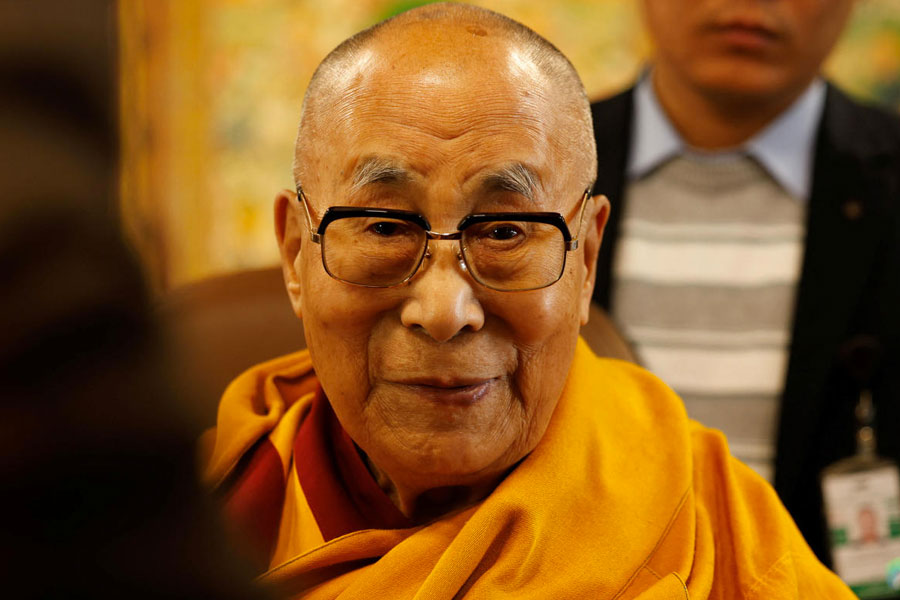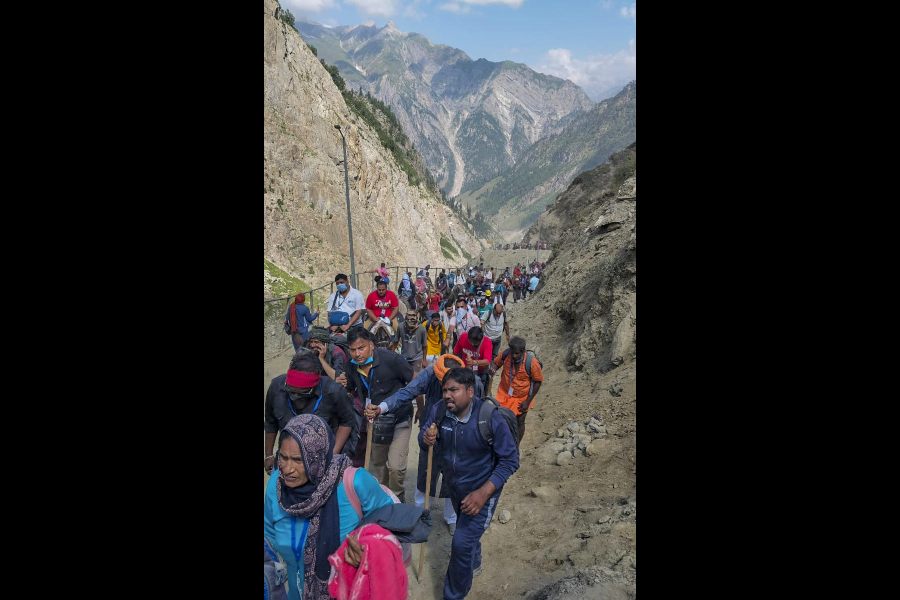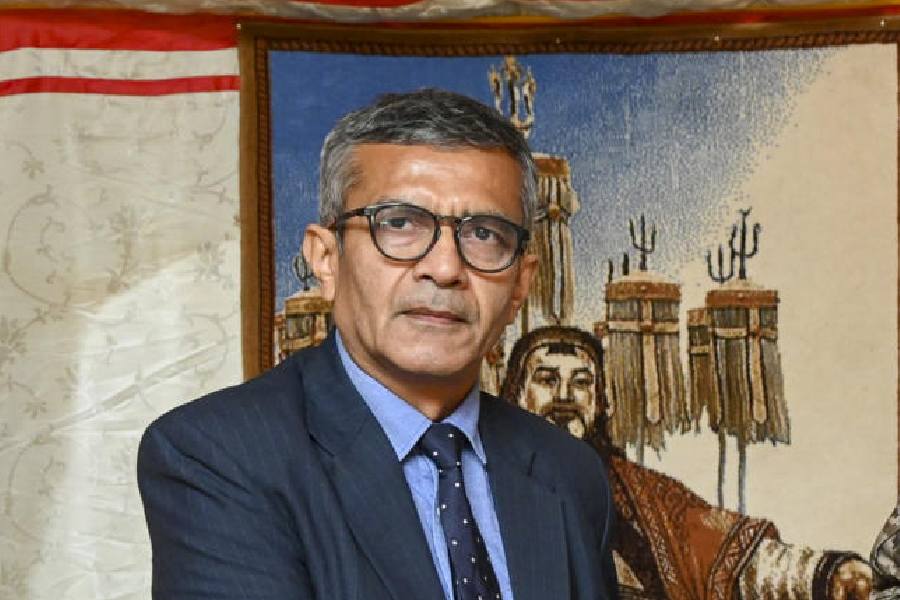 |
 |
 |
(From top) An acrobat uses a gas balloon to fly over spectators before descending to garland chief minister Arjun Munda and Governor Syed Ahmed during Statehood Day celebrations at Birsa Munda Football Stadium in Ranchi on Tuesday. She was followed by another acrobat who repeated the feat much to the delight of the packed stadium. Pictures by Prashant Mitra |
Even a few years ago, they were homemakers confined to their huts. Now, they are not just the ambassadors of women and child health across Jharkhand’s hinterland, they’re also speaking about their achievements confidently on camera.
Sahiyas or Jharkhand’s 40,964-strong band of community health workers associated with the state health department were part of a nine-minute documentary film screened for the audience in the capital as part of Statehood Day celebrations at Birsa Munda Football Stadium, Morabadi, which saw the launch of the Arjun Munda-led government’s much hyped Bitia Varsh and the Ladli Lakshmi Yojana.
Nearly 5,000 sahiyas from across the districts also came to the capital to attend the Statehood Day function, becoming the visible — and credible — faces of rural healthcare in the state whose state health delivery mechanism doesn’t figure high in national indices.
The film, made by Village Sahiya Resource Centre, a unit of the state health department, showed how the sahiyas, previously shy homemakers at Sonahatu and Bundu blocks of Ranchi district and Karra block of Khunti district, came into their own as community health workers.
Today, they confidently address delicate issues such as reproductive health, family planning, hygiene at the onset and after puberty as well as adolescent sexuality.
“I have ferried more than 100 patients to the healthcare centre in the last four years of my becoming a sahiya, apart from helping eight mothers to go for institutional delivery. Now, everyone respects me,” said sahiya Karuna Devi (34) of Rahe village, Sonahatu block in Ranchi district.
Karuna, a graduate from Mandar College, is one of the most educated and better-off sahiyas.
“I get a lot of encouragement from my husband,” she said, referring to Lakhmikant Pandey, the owner of two auto-rickshaws. She also has two daughters, Akriti and Smriti, that complete a model rural “hum do, hamare do” family.
“Apart from institutional delivery and healthcare, we teach adolescent girls about personal hygiene and how to become a good mother later. I’m happy the state government has announced this year as Bitia Varsh,” said Ratna Devi (42), another graduate, who is the sahiya of Rugdi village, Sonhatu block. Ratna became a sahiya in 2007 and has so far helped 12 pregnant women to undergo institutional delivery and more than 100 patients to avail of treatment at health centres.
Like Karuna and Ratna, thousands of sahiyas act as a human bridge between the faceless public health delivery system and rural people even in far-flung hamlets, particularly vulnerable sections such as expectant mothers and adolescent girls.
“The sahiyas have emerged as an important agent and voice of social change in the villages they operate in, not just in matters of health but also sanitation, cleanliness and attitudes,” said Shakti Pandey, who wrote the documentary’s script.
 |
| Chief minister Arjun Munda washes the feet of a girl at the launch of Bitia Varsh at Birsa Munda Football Stadium in Ranchi on Tuesday. Picture by Prashant Mitra |
Taking up the cause of woman’s empowerment, chief minister Arjun Munda, to commemorate the 11-year-old state, also launched the Laadli Lakshmi Yojana, the scheme under which annual and variable sums would be deposited into the bank accounts of every girl child born to a below-poverty-line family till she turns 21.
He also handed over cheques of Rs 1,000 each to five underprivileged girls from Ranchi district — Neha Kumari, Arushi Munda, Pushpa Lohra, Shreya Lohra and Sakshi Lohra — on the occasion as a symbolic launch of the flagship scheme.
Sahiyas present at the Morabadi grounds unanimously gave a thumbs-up to Ladli Lakshmi Yojana.
“Women and girls from poor families need such a helping hand from the government to realise their full potential,” said Manjula Devi (43), the sahiya of Gosaidih village in Bundu block.
“If implemented well, it will herald empowerment for a whole new generation of girls,” she smiled.
Do you think cash schemes for poor girls will empower them?
Tell ttkhand@abpmail.com










